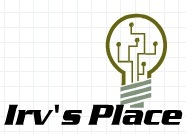If you have a piece of equipment that you want to keep running in a power outage, you may want to invest in a battery backup system.
The most well known of these systems are UPS, which run computer systems in the event of an power outage. (or simply allow the computer to be shut down safely). Typical UPS systems do not have large enough batteries for more than a few minutes of power unless they are connected to additional battery banks. You can construct your own battery backup with the following:
- A 12 volt deep cycle marine battery. The higher the amp hours (ah), the more power is available, and the longer you can run your equipment. Multiple batteries can also be connected in parallel to provide additional power.
- A power inverter to convert the DC power from the battery to AC power for your equipment. *
- A trickle charger to recharge the batteries and keep them topped off when not in use.*
* Also available are combined units, with an inverter, charger, and automatic transfer switch all in one.When grid power is available, it will use it to power your appliance, and keep your batteries topped off. When grid power goes out, it will automatically switch to battery power. This Tripp Lite inverter/charger is an excellent example.
This illustration show the basic setup:

How many watts?
In order to determine the size of the inverter you need, you'll need to determine the wattage of the equipment you want to run. This should be printed on a plate on the equipment, or indicated in the manual. To calculate the total wattage:
- Record the number of watts (W) for each piece of equipment. If watts are not listed, multiply the volts (V) times the amps (A).
- If your're powering an appliance with an electrical motor, (like a refrigerator) additional power will be needed to start the motor. This will be listed as "starting" wattage or "max" wattage. If this is listed on your appliance, also add this value.
- Add up the wattage to get the total. Make sure you buy an inverter that can handle the total load. It's a good idea to buy a slightly larger inverter than you need, just in case.
Most inverters are able to handle a short burst of additional wattage without overloading. This will be listed as peak wattage.
Do I need a sine wave inverter? What is the difference between modified and pure sine wave?
Without getting overly technical, the power that you get from your electric company is a pure sine wave. It is smooth, even power, without any surges. A modified sine wave is not quite as good, but many electronics can deal with it just fine. Sensitive electronics like a computer, however, will require a pure sine wave. Even my pellet stove has fancy enough electronics to require a pure sine wave. So be sure to check your equipment manual and make sure you buy the proper inverter. Pure sine wave inverters are more expensive, but you'll have the peace of mind of knowing your equipment won't get fried.
Store your batteries correctly
Be sure to buy a sealed deep cycle marine battery. Unsealed batteries can off-gas, and this gas can ignite if the battery doesn't have proper ventilation. To be absolutely safe, you may wish to purchase a battery box to store your battery in.
I hope that you found this guide useful. I'm currently saving up to build a battery back up for my pellet stove. If and when that happens, I'll be sure to post a picture. =)

No comments:
Post a Comment